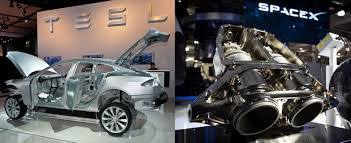
Breaking News
 Food Banks All Over The U.S. Are Being Overwhelmed By A Tsunami Of Hungry People
Food Banks All Over The U.S. Are Being Overwhelmed By A Tsunami Of Hungry People
 Kids' Online Safety Laws Could Dig a Graveyard for Speech and Privacy
Kids' Online Safety Laws Could Dig a Graveyard for Speech and Privacy
 The Only REAL Solution to Digital ID - #SolutionsWatch
The Only REAL Solution to Digital ID - #SolutionsWatch
Top Tech News
 Japan just injected artificial blood into a human. No blood type needed. No refrigeration.
Japan just injected artificial blood into a human. No blood type needed. No refrigeration.
 The 6 Best LLM Tools To Run Models Locally
The 6 Best LLM Tools To Run Models Locally
 Testing My First Sodium-Ion Solar Battery
Testing My First Sodium-Ion Solar Battery
 A man once paralyzed from the waist down now stands on his own, not with machines or wires,...
A man once paralyzed from the waist down now stands on his own, not with machines or wires,...
 Review: Thumb-sized thermal camera turns your phone into a smart tool
Review: Thumb-sized thermal camera turns your phone into a smart tool
 Army To Bring Nuclear Microreactors To Its Bases By 2028
Army To Bring Nuclear Microreactors To Its Bases By 2028
 Nissan Says It's On Track For Solid-State Batteries That Double EV Range By 2028
Nissan Says It's On Track For Solid-State Batteries That Double EV Range By 2028
 Carbon based computers that run on iron
Carbon based computers that run on iron
 Russia flies strategic cruise missile propelled by a nuclear engine
Russia flies strategic cruise missile propelled by a nuclear engine
 100% Free AC & Heat from SOLAR! Airspool Mini Split AC from Santan Solar | Unboxing & Install
100% Free AC & Heat from SOLAR! Airspool Mini Split AC from Santan Solar | Unboxing & Install
Could Tesla And SpaceX Join Hands For Global Internet Service?

As anyone who's stuck paying an onerous bill to a local internet monopoly will agree, there's a great market opportunity out there for any company that could offer a global wireless internet connection. SpaceX has been working on just that since 2015, developing a broadband satellite constellation called Starlink. A recent article in SmarterAnalyst proposes that Tesla could be an integral part of the plan.
According to SmarterAnalyst, SpaceX is set to invest around $10 billion in Starlink. Satellite launches are scheduled to begin in 2019 and be completed by 2024. Starlink's satellites will be located just 210 to 750 miles above the ground, one of the lowest satellite constellations ever launched. The lower the satellites, the faster communication speeds can be. Starlink hopes to offer internet speeds of 1,000 Mbps, comparable to 5G (about 1,400 Mbps). However, to provide the blazing fast connection speeds Starlink is promising, it needs to have ground transceivers – small terminals mounted on customers' homes or businesses, analogous to satellite dishes.

 "Refusal to Disclose"
"Refusal to Disclose"

